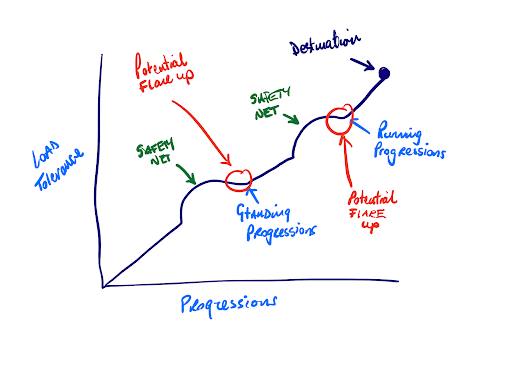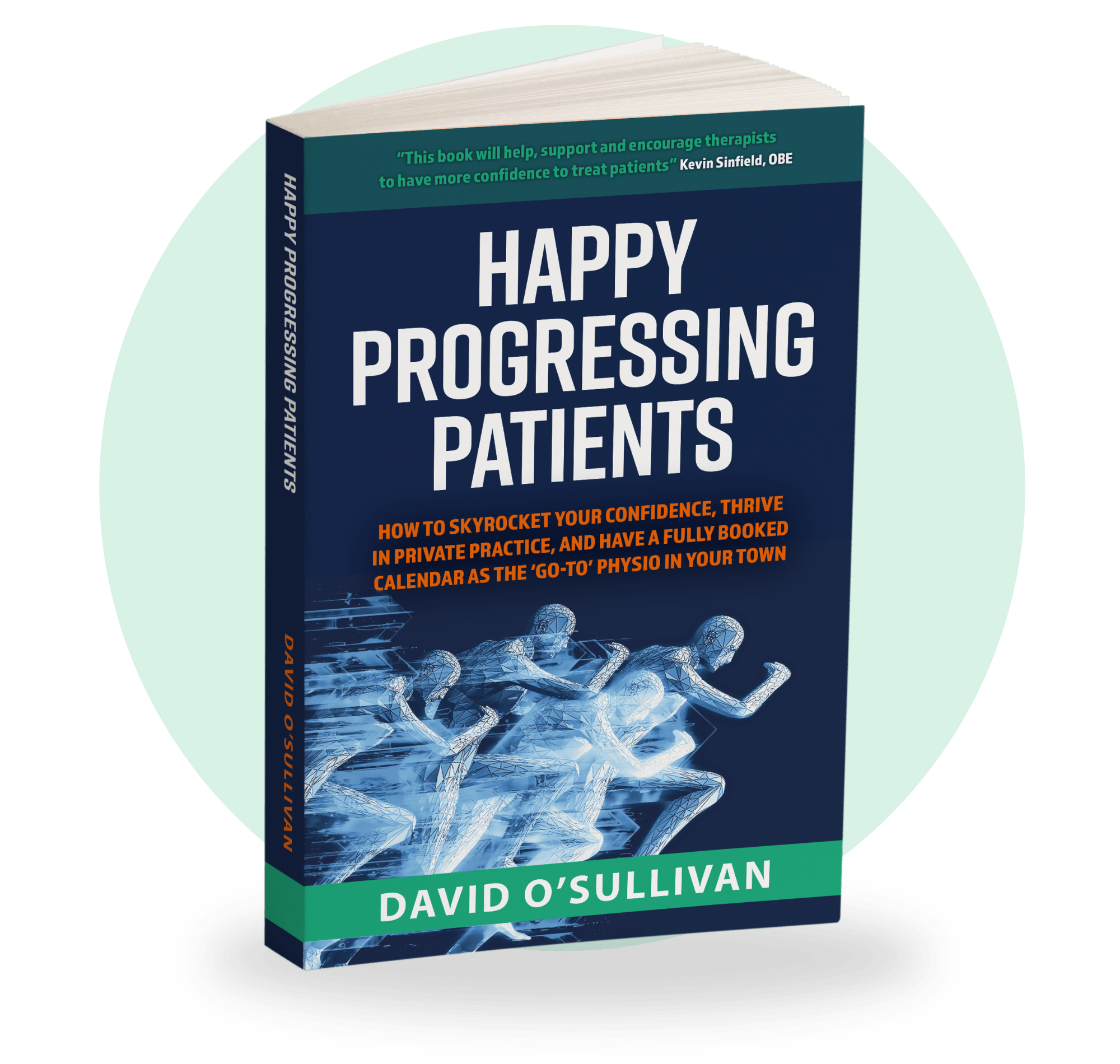
Working in professional sport my whole career while also building a cash-pay private practice, there really is no room for errors or mistakes…
You need to get results quickly and safely.
That’s why I like to build safety nets into my rehab programs…
…so I know it’s safe for patients to progress quickly but more importantly have earned the right to.
This allows me to work smarter, not harder.

That’s exactly what the ‘humps’ are in the graded exposure plan below…
With lower limb injuries, for example, there are two places you are more likely to mess up…
That is knowing if patients can tolerate the load in standing based exercises and knowing if they are ready to run.
So what I like to do is to use two to three key tests to ensure they have earned the right to progress…
For example in standing exercises…
…if I want to train co-contractions more functionally in the everyday life of the patient…
…I really want to stress the soleus and hamstrings to make sure they can tolerate this to allow the hip to be successful in everyday tasks…
A test I use as a key performance indicator is a hamstring load tolerance test…
Not a perfect test and I’m sure the ‘Twitter Gurus’ will have a field day but very useful in the real world with real people…
The patient basically lies on their back and does a single leg outer range bridge… just lifting their bum an inch off the floor.
Then they take the weight off the heel and into the midfoot and lift the heel slightly off the floor.
This will put more load on the distal hamstrings and soleus. If the patient can tolerate the load great.
If they cramp or can’t feel the hamstrings tolerating load… then I suspect there are still motor adaptations present… and there’s more work to be done before progressing.
Not a perfect test that will make a top journal… but in the real world, a really useful quick test in the clinic that gives me confidence.
Another example is running.
I want to really increase the rate of force development… ensure the knee joint is co-contracting well… and the whole limb is doing its job before exposing to running.
My hopping progressions are a great way to overload the tissues in a more controlled environment gradually… before exposing to the first running session.
This is critical in private practice and pro sport to take the emotion out of the decision making and make decisions based on logic.
Is the next progression the next logical progression?
That’s a question I like to ask myself to stop emotion taking over.
Need some help with implementing this in your clinic?
Let’s jump on a FREE 30 minute CPD session
We will go through your current challenges, your goals and I’ll give you my honest opinion of where I would start in your current situation.
Click the button below to claim your FREE CPD session… before the last few are gone for the month.

Get Your FREE Copy Of The Amazon #1 Bestseller That Holds The Secret To Confidently Treating Any Patient!
Download a Free ‘ebook’ copy of the 8-Step ‘World Cup’ Treatment Plan that helped my private patients achieve full recovery and made me a ‘go-to’ physio for complex cases…
